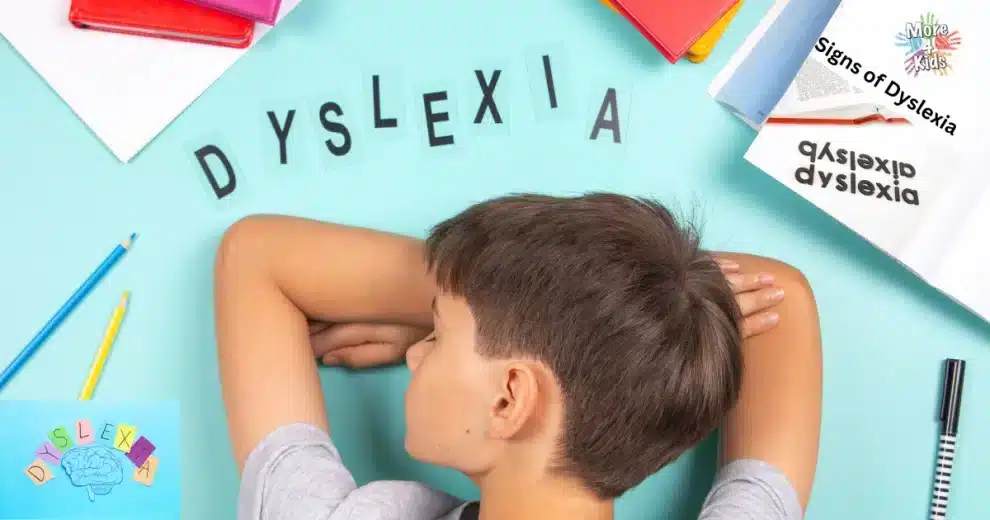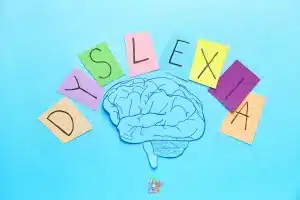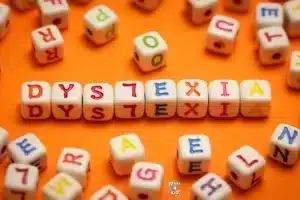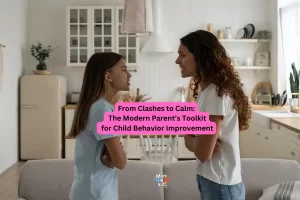Discovering that your child has dyslexia can be overwhelming, but with the right knowledge and strategies, you can play a vital role in their success. This article aims to equip you with a deep understanding of dyslexia, enabling you to identify early signs of dyslexia and implement effective parenting strategies to support your dyslexic child. By embracing this journey, you can unlock your child’s true potential and nurture their unique strengths.
Understanding Dyslexia
Table of Contents
The Oxford Languages Dictionary definition of dyslexia: “a condition of neuro-developmental origin that mainly affects the ease with which a person reads, writes, and spells, typically recognized as a specific learning disorder in children.”
It is crucial for parents to understand what dyslexia entails and be able to recognize the early signs in their children. According to Christi Kubeck, an esteemed expert in the field, “Dyslexia is not a reflection of intelligence; it is a specific learning difference that requires targeted support and understanding.”
Kubeck in her interview said she began her teaching career in Title I schools where many children struggled to read. She embraced every opportunity for professional development to assist them and still found kindergarteners disheartened by their struggles. She moved to schools in higher socioeconomic neighborhoods but found the reading problem persisted. Dyslexia is more common than we may think.
“Dyslexia affects one in five people,” Kubeck offers, “every teacher has seen it.” It wasn’t until her cousin, whose children have dyslexia, found The Orton-Gillingham Approach and, with that tutelage, found their symptoms improve that Kubeck knew she’d found her way. After her training and years of helping her students, Kubeck has now become the “teacher’s teacher,” helping teachers and tutors learn ways to assist students with dyslexia.
Dyslexia is characterized by difficulties in accurate and fluent word recognition, poor spelling, and decoding abilities. Children with dyslexia may exhibit challenges in reading comprehension, writing, and sometimes in math as well. Kubeck emphasizes, “Dyslexia is both biological and neurological in nature. It’s a different wiring of the brain. The dyslexic brain processes information through different pathways. So typically language is processed on the left side of the brain, but for a dyslexic all the work is being done in the frontal lobe and the right side.”
Recognizing the early signs of dyslexia is crucial for early intervention and support. Kubeck highlights some key indicators for the signs of dyslexia that parents can watch for in their children:
Language and Speech Development:
Children with dyslexia may have delayed language development compared to their peers. They may struggle with acquiring new vocabulary, pronouncing words correctly, or expressing themselves verbally. Kubeck advises parents to pay attention to pronunciation errors, difficulty rhyming, and delayed vocabulary development using the words “stuff” or “things” as filler as potential red flags.
Reading and Writing Challenges:

Cognitive Abilities:
Dyslexia can impact various cognitive skills. Kubeck explains, “Children with dyslexia may have difficulties with memory, attention, organization, and instructions. Dyslexia does not define a child’s intelligence or potential. It is merely a learning difference that requires targeted support and understanding.”
Being aware of these early signs allows parents to take proactive steps to support their dyslexic child. Kubeck offers encouragement, stating, “Early intervention is crucial. Recognizing the signs and seeking appropriate support can make a tremendous difference in your child’s educational journey.”
Early Signs of Dyslexia
Recognizing Early Signs: Learn to Identify the Early Signs of Dyslexia, Ensuring Early Intervention and Support
Early identification of dyslexia is crucial for providing timely intervention and support to children who may be at risk. By recognizing the early signs of dyslexia, parents and educators can take proactive steps to address the challenges faced by dyslexic children. Let’s explore the importance of early intervention and strategies to identify the early signs of dyslexia.
Christi Kubeck explains, “Early signs of dyslexia may include difficulty with rhyming, recognizing letters, learning letter sounds, or acquiring early reading skills.” These challenges often stem from underlying difficulties in language and speech acquisition. Reading and writing are fundamental skills in a child’s educational journey, but for dyslexic children, these tasks can be particularly challenging.
Here are key points to consider:
Expressive Language Skills:
Children with dyslexia may experience difficulties in expressing themselves verbally. They may struggle to find the right words, articulate their thoughts clearly, or follow complex instructions. Expressive language challenges can affect their ability to communicate effectively and may be indicative of dyslexia.
Receptive Language Skills: Receptive language skills involve understanding and comprehending spoken language. Children with dyslexia may have difficulty processing and interpreting verbal information. They might struggle to understand instructions, follow conversations, or comprehend complex sentences. These challenges in receptive language can hinder their overall learning and academic performance.
Language and Communication:
Some of the signs of dyslexia are Difficulties in language and communication development can be early warning signs of dyslexia. Children with dyslexia may struggle with spoken language skills, finding it challenging to express themselves clearly or follow instructions. They may also have difficulty in acquiring vocabulary or forming coherent sentences.
Phonological Awareness:
Phonological awareness refers to the ability to identify and manipulate individual sounds in spoken language. Difficulties in phonological awareness can be a strong indication of dyslexia. Kubeck explains, “They might have trouble identifying a beginning sound or just blending 3 sounds like ca- -at. They might see that and say mop.”
Reading and Writing Challenges:
Dyslexia primarily affects reading and writing skills but also involves oral language. Therefore, early signs of dyslexia often manifest in these areas. Children may exhibit difficulties in learning to read, including decoding words, recognizing sight words, and achieving reading fluency. Writing may also pose challenges, with poor spelling, punctuation, and grammar.
Memory and Sequencing:
Some of the signs of dyslexia problems with auditory of visual memory. Children with dyslexia may struggle with auditory and visual memory, making it challenging to remember and sequence information accurately. They may have difficulty recalling letter sounds, sight words, or retaining information presented in class. These difficulties can further hinder their reading and comprehension skills.
Executive Functioning:
Executive functioning encompasses a range of cognitive processes, including organization, planning, time management, and problem-solving. Dyslexic children may struggle with these executive functions, making it difficult for them to stay organized, manage their time effectively, and break tasks into manageable steps. Difficulties in executive functioning can further compound the challenges they face in academic and everyday tasks.
 Processing Speed:
Processing Speed:
Processing speed refers to the ability to process and respond to information quickly. Dyslexic children may exhibit slower processing speed, affecting their ability to keep up with the pace of reading, writing, and classroom activities. They may require additional time to complete tasks, which can lead to frustration and feelings of inadequacy.
Observation and Awareness:
Being observant and aware of a child’s learning patterns and behaviors and identifying the signs of dyslexia is the first step in identifying potential signs of dyslexia. Christi Kubeck emphasizes, “Early signs of dyslexia may include difficulty with rhyming, recognizing letters, learning letter sounds, or acquiring early reading skills.” Paying attention to these indicators can help parents and educators intervene early and provide appropriate support. While it is possible with a scan to diagnose dyslexia at birth, this is not standard of care. Most school children are diagnosed by the time they are 8.
By identifying dyslexia early, parents and educators can implement strategies that support the child’s learning and build their confidence. Interventions such as multisensory approaches to reading instruction, explicit phonics instruction, assistive technologies, and accommodations can make a significant difference in the child’s academic progress and overall well-being.
Early intervention can make a significant difference in helping dyslexic children overcome these obstacles and develop effective reading and writing strategies. Multisensory approaches, specialized reading programs, assistive technologies, and accommodations can provide valuable support for dyslexic children. Additionally, fostering a supportive and inclusive learning environment where their unique strengths are recognized can boost their confidence and motivation to succeed.
 Dyslexia Myths
Dyslexia Myths
Despite growing awareness about dyslexia and knowing some of the symptoms and signs of dyslexia, there are still several misconceptions and myths surrounding this specific learning disorder. It is essential to debunk these myths in order to promote a more accurate understanding of dyslexia.
Let’s explore and dispel some common myths:
Dyslexia Myth 1: Dyslexia is a result of laziness or lack of intelligence.
Fact: This is far from the truth. Dyslexia is not related to laziness or intelligence. Christi Kubeck emphasizes, “Dyslexia ranges from mild to severe. In severe dyslexia, the brain works about five times harder than our typical brain, so they are actually fatigued. To put in five times the amount of work and get little results is quite frustrating. To just come home and say, “try harder” or come home and pile on four more hours of homework doesn’t work.” Dyslexic individuals often possess unique strengths in areas such as creativity, problem-solving, and critical thinking so allow your children time to enjoy their strengths as you learn together how to correct the challenge.
Dyslexia Myth 2: Dyslexia can be outgrown or cured.
Fact: Dyslexia is a lifelong condition; it does not go away or disappear with age. Christi Kubeck explains, “The brain is very malleable, and you can retrain the brain and deepen those pathways so that you can read with automaticity. But it doesn’t go away.“ With appropriate support, intervention, and strategies, however, individuals with dyslexia can learn to manage their challenges effectively and thrive academically and personally.
Dyslexia Myth 3: Dyslexia is only about reversing letters.
Fact: While letter reversals (such as confusing “b” and “d”) can be a common characteristic of dyslexia, it is just one aspect of the disorder. Christi Kubeck explains, “One thing we see a lot is they think it is (only) a reversal. So if I see the word “was,” then I might read the word “saw” on a paper or confuse “no” with “on.” The brain sees the information but as it goes through and takes those pathways, it gets jumbled and not stabilized, kind of lost in that working memory.”
Dyslexia Myth 4: Dyslexia is a visual problem.
Fact: Dyslexia is not primarily a visual problem. It is a neurological condition that affects how the brain processes language. Kubeck explains, “It’s actually not a vision problem at all. It has more to do with language processing.” While visual strategies can be helpful for some individuals with dyslexia, the core challenge lies in phonological awareness and processing.
Dyslexia Myth 5: Dyslexia only affects children.
Fact: Dyslexia is a lifelong condition that continues into adulthood. While early identification and intervention are crucial, many individuals go undiagnosed until later in life. It is essential to recognize that dyslexic individuals can achieve success in various fields with appropriate support and accommodations.
Dyslexia Myth 6: Dyslexia is a sign of cognitive impairment.
Fact: Dyslexia is not related to intelligence or overall cognitive abilities. Children with dyslexia often have average or above-average intelligence and can excel in other areas that are not directly affected by their reading and writing difficulties. In fact, many dyslexic individuals possess unique strengths in areas such as problem-solving, creativity, critical thinking, and visual-spatial reasoning. It is crucial to understand that dyslexia is a specific challenge in processing language and does not reflect a lack of intelligence
By debunking these myths, we can foster a more inclusive and supportive environment for individuals with dyslexia. Understanding the reality of dyslexia as a specific learning difference, rather than a reflection of intelligence or effort, allows us to provide the necessary support and accommodations to help dyslexic individuals reach their full potential.
Parenting Strategies for Supporting Dyslexic Children
Creating an Inclusive Environment:
Dyslexic children thrive in an inclusive and accepting environment that celebrates their unique abilities. Christi Kubeck emphasizes the importance of creating a nurturing home environment where dyslexic children feel understood and supported. Her brother had severe dyslexia and she remembers, “He would cry during homework. We were raised by a single mom, so my mom would help him with his homework, and I remember him crying and saying “I’m too stupid. Don’t do this. Don’t spend time on this. I can’t do this. I’m so stupid.” And he was little then and to know that mom never allowed his dyslexia to define him… And she also didn’t allow his strengths, the things that he was really good at, to define him, but she helped him find that right balance.” That kind of nurturing home provided the environment that allowed him to complete not only college but graduate school and find a fulfilling job where he can make great contributions and support his family.
By fostering a positive mindset and embracing their strengths, parents can help their children develop a healthy self-image and build resilience.
Effective Communication:
Communication plays a crucial role in supporting dyslexic children. Kubeck advises parents to engage in effective communication techniques that promote their child’s self-esteem and confidence. This includes actively listening to their thoughts and concerns, validating their experiences, and providing reassurance. Kubeck suggests, “Use positive reinforcement and praise to acknowledge their efforts and progress. Encourage them to express their feelings and ideas and let them know that their voice matters.”
Advocacy and Collaboration:
As a parent, advocating for your child is vital to ensure their educational needs are met. Kubeck emphasizes the importance of collaborating effectively with teachers, school administrators, and other professionals involved in your child’s education. She suggests, “Establish open lines of communication with the school, attend parent-teacher meetings, and actively participate in Individualized Education Program (IEP) meetings. But also teach your children to advocate for what they need at school.” By advocating for appropriate accommodations, modifications, and support services, parents can help create an inclusive learning environment for their child.
Building Literacy Skills:
Enhancing literacy skills is a key aspect of supporting dyslexic children. Kubeck recommends exploring evidence-based methods and resources tailored to their specific needs. This may include implementing multisensory teaching approaches, using specialized reading programs, and providing additional reading materials that cater to their interests. Kubeck advises, “Understood.org and the International Dyslexia Association have wonderful resources to utilize. Remember to celebrate your student’s progress and achievements along the way.”
Assisting with Homework:
Homework can be a challenging task for dyslexic children. Kubeck suggests transforming it into a positive learning experience by providing practical tips and support. This may involve breaking down tasks into manageable chunks, creating a structured and organized workspace, and using assistive technology or tools such as text-to-speech software. She really likes the resources Learning Ally, Audible, and Google Read and Write.
Kubeck adds, “Offer guidance and support without taking over the homework. When your child needs to write an essay, allow them to dictate all the information they can think of (a verbal brain dump) and then refer back to those sequences to put together the final document.” She suspects AI may come in handy for these students as we recognize the “right” way to use it, to complement not cheat the system. Kubeck also recommends utilizing checklists whenever possible. “Checklists are very, very important. The dyslexic mind’s memory often can’t hold all of the steps at once. So having a checklist for your student, whether it be home life or school life, helps them organize what has been teach and what they need to do when they get home.
Emotional Support:
Dyslexic children may experience emotional challenges due to their learning differences. Providing emotional support is crucial for their overall well-being. Kubeck recommends being empathetic, patient, and understanding. She advises, “Acknowledge their frustrations and challenges while emphasizing their strengths. Encourage them to develop a growth mindset and celebrate their progress, no matter how small. Remind them that dyslexia does not define their worth or potential.”
Conclusion:
By arming yourself with knowledge and employing effective parenting strategies, you can create an environment that fosters your dyslexic child’s growth, confidence, and academic success. Remember, dyslexia does not define your child’s potential; it merely presents a different way of learning. Within that difference lies a world of untapped strengths and talents waiting to be nurtured. By celebrating and leveraging these strengths, you can help your child discover their true potential and find success in their own way.
If you have a tutor for your dyslexic child, consider sponsoring their Orton Gillingham type training at the Literacy Lane with Christi Kubeck, renowned for her expertise in dyslexia education, offers specialized training programs designed to empower tutors and educators with the knowledge and skills needed to effectively support dyslexic learners.
Signs of Dyslexia Frequently Asked Questions
What is dyslexia and how does it affect children?
Dyslexia is a condition of neuro-developmental origin that primarily affects a person’s reading, writing, and spelling abilities. It’s important to note that dyslexia is not a reflection of intelligence. Children with dyslexia may face challenges in reading comprehension, writing, and sometimes in math. However, with the right support and understanding, they can unlock their true potential and nurture their unique strengths.
What are some early signs of dyslexia in children?
Early signs of dyslexia may include delayed language development, difficulty with rhyming, recognizing letters, learning letter sounds, or acquiring early reading skills. Children with dyslexia may also struggle with memory, attention, organization, and instructions. Recognizing these signs early can make a tremendous difference in a child’s educational journey.
Are there any common myths about dyslexia that I should be aware of?
Yes, there are several misconceptions about dyslexia. Some people mistakenly believe that dyslexia is a result of laziness or lack of intelligence, or that it can be outgrown or cured. In reality, dyslexia is a lifelong condition that affects how the brain processes language. It’s not related to intelligence or overall cognitive abilities, and it doesn’t go away with age. Understanding the reality of dyslexia can help us provide the necessary support for individuals with this condition.
How can I support my dyslexic child at home?
Creating an inclusive and understanding environment at home is crucial. Engage in effective communication techniques that promote your child’s self-esteem and confidence. Assist with homework by breaking down tasks into manageable chunks and using assistive technology or tools. Most importantly, provide emotional support, acknowledge their frustrations and challenges while emphasizing their strengths.
What resources are available to help me support my dyslexic child?
There are many resources available to help you support your dyslexic child. Websites like Understood.org and the International Dyslexia Association offer a wealth of information and resources. Additionally, consider seeking specialized training programs designed to empower tutors and educators with the knowledge and skills needed to effectively support dyslexic learners.








 Processing Speed:
Processing Speed: Dyslexia Myths
Dyslexia Myths








Add Comment